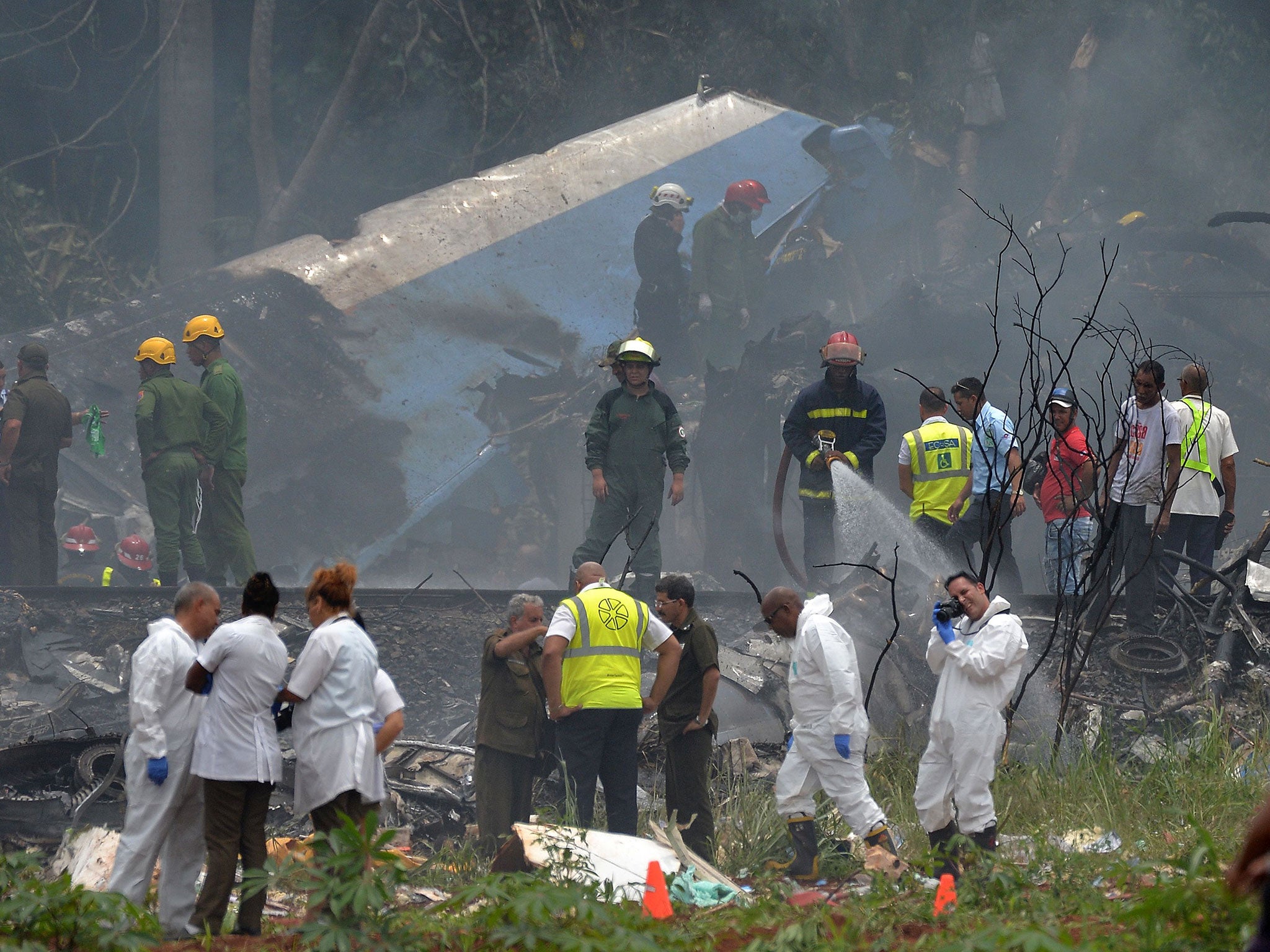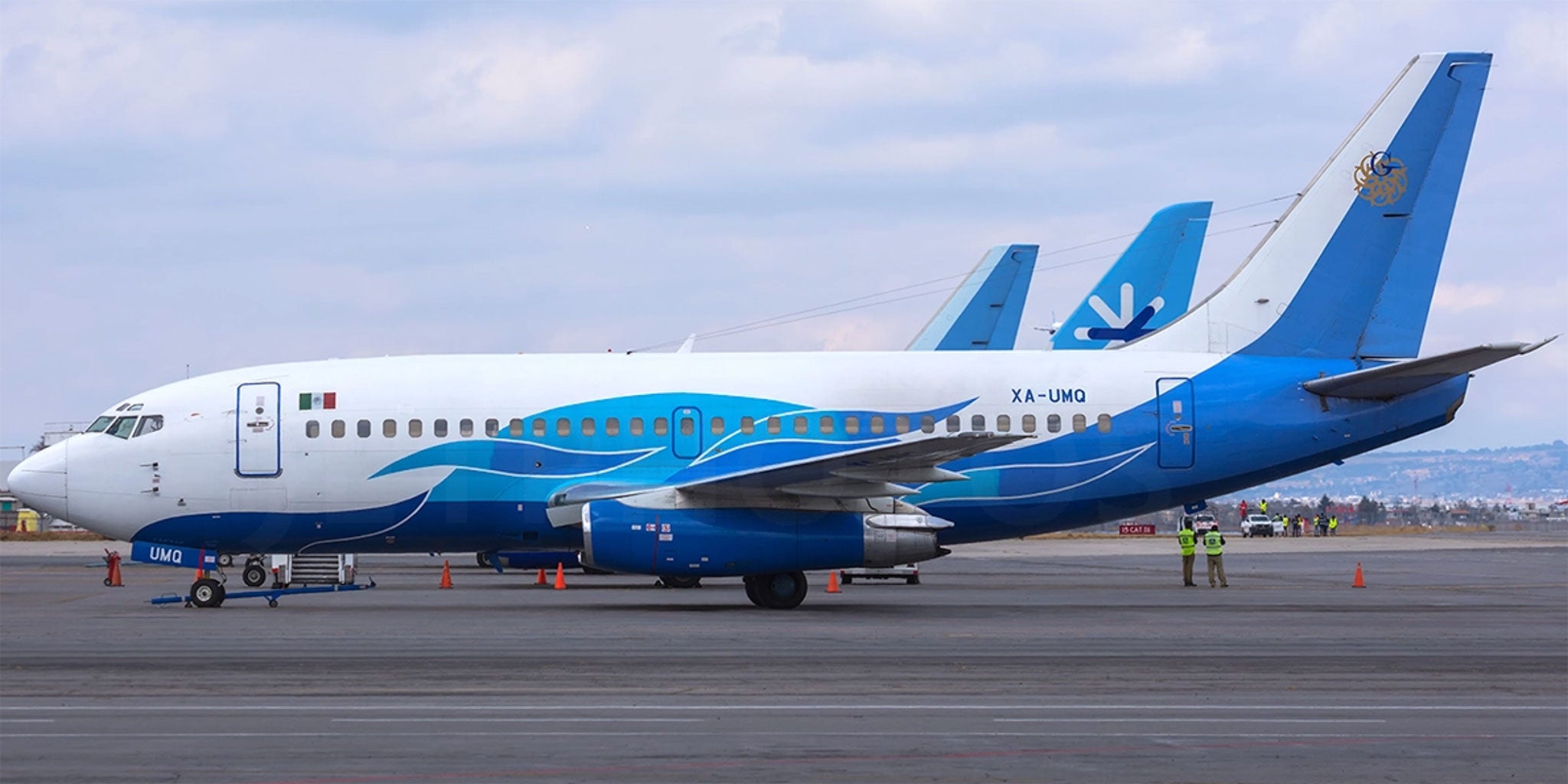Havana plane crash: More than 100 feared dead after Cuban airliner comes down shortly after take off
Boeing 737 jet was 30 years old and had flown for seven other airlines
A passenger plane carrying more than 100 people crashed shortly after take off from Havana’s main airport, killing most on board.
Local media reported that three survivors – all women – were in a critical condition after the Boeing 737 jet, which was en route from Jose Marti International Airport to the eastern Cuban city of Holguin, came down.
Conflicting reports suggested between 104 and 110 passengers and crew were on flight CU972, which had been scheduled to depart at 11am local time (4pm BST) and land an hour and 20 minutes later.
But the jet failed to make its destination and came down close to its departure airport, crashing into a field and railway line.
Photos posted on social media showed a large plume of thick, black smoke rising from near the terminal buildings.
"The only thing we heard, when we were checking in, an explosion, the lights went out in the airport and we looked out and saw black smoke rising and they told us a plane had crashed," Argentine tourist Brian Horanbuena said..
The aircraft involved is believed to be a Boeing 737-200 on loan from a Mexican airline, Global Aerolineas Damojh of Guadalajara.
The plane was one of the oldest commercial aircraft in service — almost 39 years old. It was first flown by the US airline, Piedmont, in 1979, and had flown for many other carriers.
Reports say it lost height shortly after take off and crashed in woodland close to the airport.
Havana’s airport is a short way southwest of the Cuban capital, and has pockets of population nearby as well as a major highway near one end of the runway.
There is concern that people on the ground may be among the casualties.
Residents of the rural area said they had seen some survivors being taken away in ambulances.
State TV said nine foreign crew were on board, as well as the passengers, while Cuba’s president, Miguel Díaz-Canel, said he feared there would be many fatalities.

Crash investigators are at the scene alongside police and firefighters.
What appears to be a charred wing and other parts from the plane were scattered on the ground.
A post on Cubana’s website urged families of the passengers to contact the airline using two telephone numbers.
Plane tracking app FlightRadar24 showed an American Airlines jet having departed from the airport shortly after the crash, suggesting the runway remained open, however it was closed a short time later.
Cuban state media originally reported that the aircraft had been chartered from an Italian carrier, Blue Panorama. That airline is operating flights for Cubana, but the aircraft involved in the accident appears to have belonged to a Mexican carrier, Global Air.
The 420-mile flight to Holguin was scheduled to take just over an hour. Given the destination – a large city in the east of the island – it is likely to have had a mix of families, tourists, business travellers and government officials on board.
In the last three years of the 20th century alone, Cuba suffered four fatal accidents, and in 2010 a domestic passenger flight crashed, killing all 61 passengers and 7 crew members aboard.

Cubana de Aviación, the national airline, has had a troubled history. As a result of the US economic embargo, the airline has been largely reliant on Russian and European aircraft. Maintenance of its relatively elderly fleet has been a constant challenge.
The practice of chartering in aircraft and crew, known as “wet leasing”, is widely used around the world.
In 1999, a DC-10 jet belonging to the French airline, AOM, suffered a fatal accident while flying for Cubana. After a flight from Havana it overshot the runway at Guatemala City.
Cuba air tragedies: a timeline
- 2010 (4 November): Aero Caribbean flight 883 crashed during a scheduled flight from Cuba’s second city, Santiago, to Havana with the loss of 68 lives. The European-made ATR 72 crashed about halfway through the journey, due to a build up of ice combined with poor decision-making by the pilots.
- 1999 (25 December): Cubana flight 310 from Havana to Valencia in Venezuela hit high ground on the approach. All 22 people on board the Russian-built Yak 42 aircraft died. It was the second fatal accident involving the Cuban national airline in four days.
- 1999 (21 December): Cubana flight 1216 from Havana to Guatemala City was using an American-built DC10-30 aircraft owned by AOM of France. It overran the runway in the Guatemalan capital and ran into an area of housing. Sixteen people on board the aircraft and two people on the ground were killed.
- 1998 (29 August): Cubana flight 389 was operating a domestic sector from Quito to Guayaquil in Ecuador as part of an international round-trip. The plane was a Russian-built Tupolev 154M which failed to get off the ground in the thin air of Quito’s high-altitude airport. Seventy people on board and 10 on the ground lost their lives.
- 1997 (11 July): Cubana flight 787 was flying from Havana to Santiago, whose airport is very close to the sea. Shortly after take off, the aircraft — a Ukrainian-made Antonov 24 — crashed into the water, killing all 44 on board.
- 1990 (24 October): Cubana flight 2886 was flying the short distance from Camaguey to Santiago, using a Yak 40. In poor weather it hit high ground about five miles from the airport, killing 11 on board.
- 1989 (3 September): Cubana flight 9646 was a charter flight from Havana to Milan, carrying Italian holidaymakers. In poor weather the Russian-built Ilyushin 62M failed to gain height after take-off and crashed in an inhabited area, killing 14 people on the ground and all 126 people on board the plane.
- 1985 (19 January): A Cubana Ilyushin 18D; crashed shortly after take-off from Havana for Managua in Nicaragua, killing all 38 on board. It is thought that cargo may have shifted on board.
- 1976 (6 October): Cubana flight 455, an American-built DC8 aircraft, was flying from Barbados to Kingston when a terrorist bomb exploded, causing a fire and loss of control. All 73 people on board died.
Join our commenting forum
Join thought-provoking conversations, follow other Independent readers and see their replies
Comments